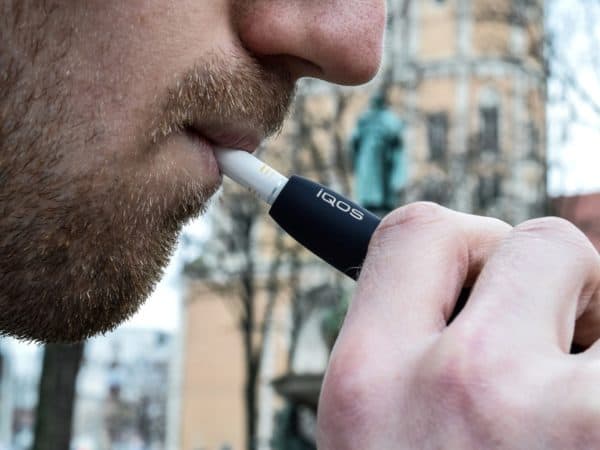
 The use of electronic cigarettes is predictably high amongst smokers, but a new study from researchers at The University of Waterloo says the use of e-cigarettes by young Canadians is also a trend.
The use of electronic cigarettes is predictably high amongst smokers, but a new study from researchers at The University of Waterloo says the use of e-cigarettes by young Canadians is also a trend.
The study, called “Who is using e-cigarettes in Canada? Nationally representative data on the prevalence of e-cigarette use among Canadians” was published in the December issue of Preventive Medicine. It found that most older vapers were current smokers, but that many younger users of ecigarettes had never smoked a traditional tobacco cigarette.
The study, which claims to contain the first nationally-representative e-cigarette data in Canada, used data from the nationally representative 2013 Canadian Tobacco, Alcohol and Drugs Survey and found that 8.5 per cent of Canadians over the age of 15 have tried an e-cigarette and that 1.8 per cent have used one in the past month. 37.3 per cent of current smokers had ever tried an e-cigarette compared to just 3.0 per cent of “never-smokers”.
The researchers, led by Jessica Reid from the The University of Waterloo’s Propel Centre for Population Health Impact, note that e-cig use was high amongst youth, with 19.8 per cent of people between the ages of 15 and 19 having tried it at least once, a number that rose to 20.1 per cent for those between the ages of 20 to 24.
The use of e-cigarettes, often referred to as vaping, has become a divisive issue. The industry, which has grown to nearly $3-billion in annual sales, has actually been around since the 1960s, but its popularity has risen in part because of widespread bans on smoking cigarettes in public places.
The crux of the debate around vaping is whether it is an effective aid to those who want to quit smoking or an attractive gateway to begin. The report from University of Waterloo researchers warns that “continued monitoring of e-cigarette use and its relationship with smoking should be a priority given the rapidly-evolving e-cigarette market and implementation of new policy measures,” a sentiment that mirrors that of one U.S. expert.
“The data I’m presenting is the first time we’ve seen such high rates in youth. It is surprising. The one clue about reasons for the high rates is the fact that very few [young people] perceive e-cigarettes to be harmful,” says Wilson Compton, deputy director of the US National Institute on Drug Abuse in Washington. “What we’ve seen in the most recent data from 2014 is the surprisingly high rates of use of e-cigarettes by 14-, 16- and 18-year-olds. Those rates of e-cigarette use are higher than traditional cigarettes. So that’s quite surprising that a larger number of teenagers in the US are now reporting current use of e-cigarettes than traditional tobacco cigarettes.”
While Health Canada has been slow to introduce legislation on electronic cigarettes, the Province of Ontario recently introduced new laws. Starting January 1, the use e-cigarettes in non-smoking areas including enclosed public places and workplaces, publicly owned sports fields and arenas, bar/restaurant patios, and playgrounds will be illegal. It will also be illegal to sell e-cigarettes to anyone under 19.
Some say the new laws go too far.
They’re not prepared to look at the benefits of getting people off of tobacco, the healthcare cost savings in the long-run,” says Brett Coleman, who manages a shop called Butt Out and Vape in Barrie.
The House of Commons Standing Committee on Health is concerned about the possibility that vaping is a gateway to traditional tobacco use. It recently recommended steps intended to reduce the risk of younger people being introduced to what it described as the “renormalization of smoking”. It said e-cigarettes should be visually distinct from other tobacco products by not having a glowing tip or filter, flavouring that specifically appeal to young people should be prohibited, tobacco companies should be prevented from placing their logos on vaping equipment, and securing e-cigarettes in child resistant packaging should be mandatory.
Comment
Leave a Reply
You must be logged in to post a comment.




 Share
Share Tweet
Tweet Share
Share




Ecigs should have been around when I was a kid. Test the gateway theory with common sense. A year supply of e liquid can be mixed at home for about $50 in materials per year and provides an experience that’s superior to tobacco. Smoking a carton a week costs thousands of dollars a year and makes people sick. And the money saved by switching helps families, not just smokers. Gvoernment should not interfere with smokers switching to vaping. The Tobacco Age is over.
VAPING IS NOT SMOKING………… Mycanadvapes.ca
We quit smoking cigarettes almost 15 years ago. It ended up being difficult but I simply kept telling myself We would not light or smoke the next smoking. I tried all kinds of things in the several attempts I made before success. I was so fed up with smoking, I was coughing my head down one morning and I did not ( could perhaps not) smoke all day.
You can explore google for CHARLES JACKSON PROGRAM QUIT SMOKING to discover the method that I utilized to help with quitting smoking.
Liked it!